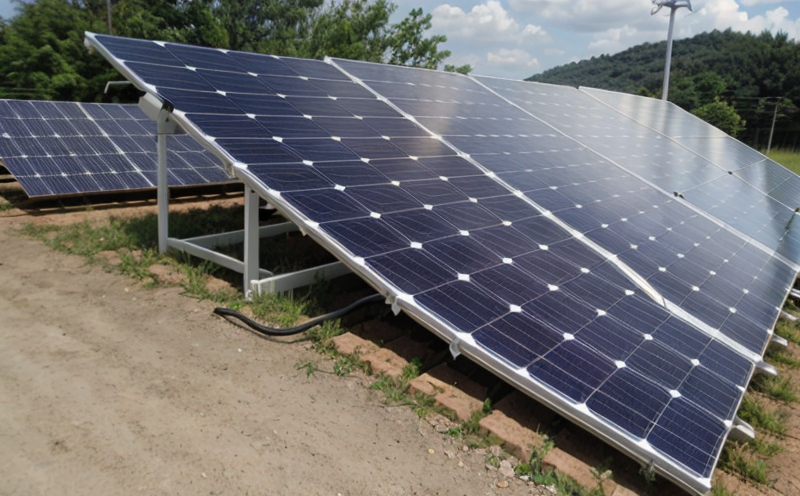ASTM D790 Flexural Properties Testing of PV Laminates
The ASTM D790 test method is a widely recognized standard used to determine the flexural properties of materials, including photovoltaic (PV) laminates. This testing procedure evaluates how well a material can withstand bending stresses without breaking, which is crucial for ensuring the durability and reliability of solar panels.
Flexural strength is a key performance indicator that helps manufacturers assess the mechanical integrity of PV laminates under real-world conditions such as temperature fluctuations, wind loading, and mechanical impacts. By adhering to ASTM D790 standards, laboratories ensure they are using consistent methods and criteria for evaluating flexural properties.
The testing process involves preparing a specimen according to ASTM D790 guidelines. Typically, this includes cutting the PV laminate into rectangular specimens with specific dimensions. The specimens are then subjected to controlled bending forces until failure occurs. The maximum stress at which failure happens is recorded as the flexural strength of the material.
Understanding the flexural properties of PV laminates through ASTM D790 testing allows for better design and optimization of solar panels. This ensures that the laminate can withstand environmental stresses, enhancing overall system performance and longevity. For instance, higher flexural strengths contribute to better resistance against hail impacts or wind-induced stresses.
Moreover, this test helps in identifying potential weaknesses within the PV laminate structure, enabling manufacturers to improve material composition and manufacturing processes. The ASTM D790 method is not only about measuring strength but also ensuring that all components of a solar panel work together efficiently under various conditions.
Applied Standards
| Standard Name | Description |
|---|---|
| ASTM D790-18(2023) | This standard specifies the procedure for determining flexural properties of solid materials by four-point bending tests. It is particularly relevant for PV laminates. |
Benefits
Conducting ASTM D790 flexural properties testing of PV laminates offers several significant benefits:
- Enhanced Reliability: Ensures that the materials used in solar panels can withstand various stresses, improving overall system reliability.
- Predictive Performance: Provides insights into how different environmental factors might affect the performance of PV laminates over time.
- Quality Assurance: Helps manufacturers meet stringent quality control standards by identifying any issues early in the production process.
- Informed Decision-Making: Empowers stakeholders with accurate data to make informed decisions regarding material selection and design improvements.
Environmental and Sustainability Contributions
The importance of ASTM D790 flexural properties testing extends beyond just product quality; it plays a pivotal role in promoting sustainability. By ensuring that PV laminates are robust enough to perform optimally over their lifecycle, this test contributes significantly to reducing waste and extending the operational life of solar panels.
Robust materials lead to more efficient energy generation, which in turn supports global efforts towards renewable energy adoption. This testing process also helps reduce the carbon footprint associated with replacing non-functional solar panels prematurely due to material failures.





